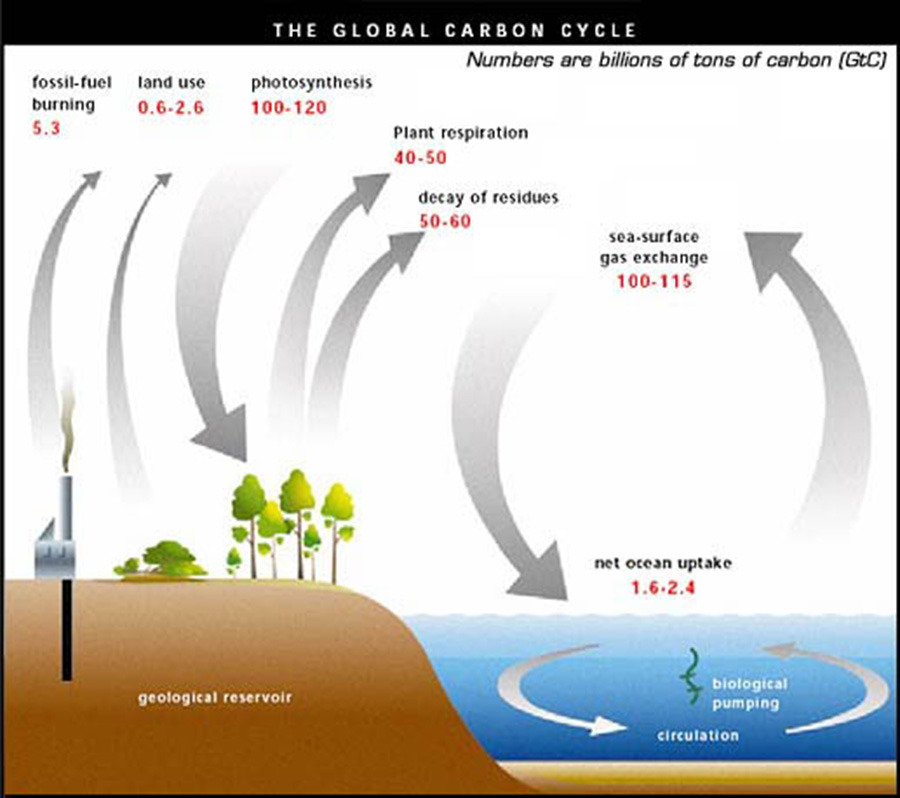
On Earth, most carbon is stored in rocks and sediments, while the rest is located in the ocean, atmosphere, and in living organisms. Where the carbon is located - in the atmosphere or on Earth - is constantly in flux. Since our planet and its atmosphere form a closed environment, the amount of carbon in this system does not change. The carbon cycle describes the process in which carbon atoms continually travel from the atmosphere to the Earth and then back into the atmosphere. Carbon helps to regulate the Earth’s temperature, makes all life possible, is a key ingredient in the food that sustains us, and provides a major source of the energy to fuel our global economy.
:max_bytes(150000):strip_icc()/carbon-cycle-141482463-5a022bb0beba33001ae856ba-5cffc7f132f14061b4d2541f3aeeeb14.jpg)
This element is also found in our atmosphere in the form of carbon dioxide (CO2). When these systems are damaged or disrupted by human activity, an enormous amount of carbon is emitted back into the atmosphere, contributing to climate change.Ĭarbon is the foundation of all life on Earth, required to form complex molecules like proteins and DNA. The carbon found in coastal soil is often thousands of years old. These areas also absorb and store carbon at a much faster rate than other areas, such as forests, and can continue to do so for millions of years. Sea grasses, mangroves, salt marshes, and other systems along our coast are very efficient in storing CO2.


Blue carbon is the term for carbon captured by the world's ocean and coastal ecosystems.


 0 kommentar(er)
0 kommentar(er)
